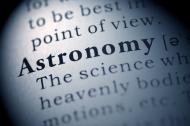2016 Orionid Meteor Shower
In 2016, the Orionid meteor shower will be visible from October 2 to November 7. The shower is expected to peak on the night of October 20 and early morning of October 21.

Halley's comet causes the Orionid meteor shower
Debris from Halley's comet (pictured above) causes the annual Orionid metoer shower.
NASA/ESA/Max-Planck-Institute for Solar System Research
When Can I See the Orionids?
Orionids tend to be active every year in the month of October, usually peaking around October 20. At its peak, up to 20 meteors are visible every hour.
The best time to view the Orionids is just after midnight and right before dusk.
The Draconids also peak in this month, usually around October 7 or 8.
Dust From Halley's Comet
The Orionid meteor shower is one of two meteor showers created by debris from Comet Halley. The Eta Aquarids in May is the second meteor shower created by debris left by Comet Halley.
Halley takes around 76 years to make a complete revolution around the Sun. It will next be visible from Earth in 2061.
Where Can I See the Orionids?
It's called Orionids because the meteors seem to emerge or radiate from the constellation Orion.
A first quarter Moon will make this meteor shower easy to see in both the Northern and Southern Hemisphere. While you can easily see a shooting star looking straight up, the table below shows the exact direction of the Orionids from your location.
Location in the sky
The Orionid meteor shower is not visible at this time of year. The best date is around Oct 20, 2016, table below is for that date:| Orionid meteor shower for Washington DC (Night between Oct 20 and Oct 21) | ||
|---|---|---|
| Time | Azimuth/Direction | Altitude |
| Thu 11:00 PM | 73° | 3.5° |
| Midnight Thu-Fri | 82° | 14.8° |
| Fri 1:00 AM | 92° | 26.4° |
| Fri 2:00 AM | 102° | 38.0° |
| Fri 3:00 AM | 115° | 49.1° |
| Fri 4:00 AM | 134° | 58.8° |
| Fri 5:00 AM | 162° | 65.1° |
| Fri 6:00 AM | 197° | 65.3° |
Set your location
How to Watch Meteor Showers
- Check the weather: Meteors, or shooting stars, are easy to spot, all you need is clear skies and a pair of eyes.
- Get out of town: Find a place as far away as possible from artificial lights
- Prepare to wait: Bring something to sit or lie down on. Star gazing is a waiting game, so get comfortable.
In This Article
- When Can I See the Orionids?
- Dust From Halley's Comet
- Where Can I See the Orionids?
- How to Watch Meteor Showers

Meteor Showers Library
- April 2016: Lyrids
- May 2016: Eta Aquarids
- August 2016: Perseids
- October 2016: Draconids
- October 2016: Orionids
- November 2016: Leonids
- December 2016: Geminids
- December 2016: Ursids
- January 2017: Quadrantids






Share this page / Follow us on:
Visit us on: